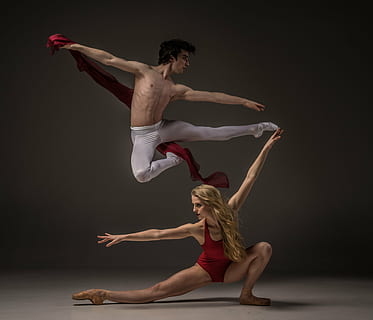Dance is a creative art form that allows individuals to express themselves through movement. There are several different styles of dance, each with its unique set of movements, techniques, and emotions. Two popular styles of dance that are often confused with each other are the contemporary and lyrical dance. While both contemporary and lyrical dance is expressive and emotional, their origins, techniques, music, and movements differ.
Table of Contents
Origins of Contemporary and Lyrical Dance
Contemporary dance is a relatively new form that emerged in the mid-20th century as a reaction against traditional ballet. It was born from the need to break free from classical dance’s rigid and formal structure and explore more fluid, expressive, and experimental movements. The contemporary dance incorporates elements from various dance styles, including ballet, jazz, modern, and even hip-hop, to create a unique and constantly evolving style.
Lyrical dance, on the other hand, is a fusion of ballet and jazz dance styles. It emerged in the 1970s and was popularized by dancers like Debbie Allen and Mia Michaels. Lyrical dance is known for its graceful, fluid movements inspired by the lyrics and emotions of the music. Lyrical dance combines ballet’s technical elements with jazz dance’s fluidity and expressiveness to create a beautiful and dynamic style.
Techniques and Movements
The techniques and movements used in contemporary and lyrical dance also differ. Contemporary dance emphasizes fluidity, flexibility, and improvisation. Dancers are encouraged to freely explore their bodies and movements, often incorporating floor work, partner work, and lifts. Contemporary dance emphasizes gravity, momentum, and breath to create organic and natural movements.
Lyrical dance, on the other hand, emphasizes grace, poise, and precision. The movements in lyrical dance are often slow and flowing, focusing on long extensions, pointed toes, and graceful arm movements. Lyrical dance also incorporates elements of storytelling, with movements and choreography designed to express the emotions and themes of the music.
Music
The music used in contemporary and lyrical dance is also different. Contemporary dance is often performed to a wide range of music, from classical to electronic and everything in between. The music is usually chosen to enhance the mood and emotions of the dance rather than dictate the movements.
Lyrical dance, conversely, is usually performed to slow, dynamic music, such as ballads and love songs. The lyrics of the music are often used as inspiration for the choreography, with the movements designed to interpret and express the emotions and themes of the song.
Read more: Guajes Health Benefits: An Important Overview Of Guajes Health Benefits
Some interesting facts about the differences between contemporary and lyrical dance styles:
- While both contemporary and lyrical dance is expressive and emotional, they originated from different dance forms. Contemporary dance emerged in the mid-20th century as a reaction against classical ballet’s rigid and formal structure, while lyrical dance is a fusion of ballet and jazz dance styles.
- Contemporary dance emphasizes fluidity, flexibility, and improvisation, with dancers encouraged to freely explore their bodies and movements. In contrast, lyrical dance emphasizes grace, poise, and precision, with slow and flowing movements inspired by the lyrics and emotions of the music.
- Contemporary dance draws inspiration from various dance styles, including ballet, jazz, modern, and hip-hop, to create a unique and constantly evolving style. Lyrical dance, conversely, is a fusion of ballet and jazz dance styles and incorporates the technical elements of ballet with the fluidity and expressiveness of jazz dance.
- The music used in contemporary and lyrical dance also differs. Contemporary dance is often performed to a wide range of music, from classical to electronic and everything in between. The music is usually chosen to enhance the mood and emotions of the dance rather than dictate the movements. Lyrical dance, on the other hand, is usually performed to slow, dynamic music, such as ballads and love songs, with the lyrics of the music used as inspiration for the choreography.
- While dancers of all ages and abilities can perform contemporary and lyrical dance styles, they require different techniques and training. Contemporary dance emphasizes improvisation and experimentation, while lyrical dance emphasizes precision and control. Therefore, dancers may need to focus on developing different skills depending on which style they choose to pursue.
Conclusion
In summary, contemporary and lyrical dance are two popular styles of dance that differ in their origins, techniques, movements, and music. Contemporary dance emphasizes fluidity, flexibility, and improvisation, while lyrical dance emphasizes grace, poise, and precision. Contemporary dance draws inspiration from various dance styles, while lyrical dance is a fusion of ballet and jazz dance. Both dance styles are beautiful and expressive, and dancers can benefit from exploring both styles to expand their movement vocabulary and creative expression.
Apart from that, if you want to know about Top Reasons to Start Watching Anime, then please visit our entertainment Category.
FAQs
The main difference between contemporary and lyrical dance is their techniques and movements. Contemporary dance emphasizes fluidity, flexibility, and improvisation, while lyrical dance emphasizes grace, poise, and precision. Contemporary dance incorporates elements from various dance styles, including ballet, jazz, modern, and hip-hop, to create a unique and constantly evolving style. Lyrical dance, on the other hand, is a fusion of ballet and jazz dance styles, known for its graceful, fluid movements inspired by the lyrics and emotions of the music.
Yes, contemporary and lyrical dance can be performed to the same music, but the style of dance and choreography will differ. Contemporary dance is often performed to a wide range of music, from classical to electronic and everything in between. The music is usually chosen to enhance the mood and emotions of the dance rather than dictate the movements. Lyrical dance, conversely, is usually performed to slow, passionate music, such as ballads and love songs. The lyrics of the music are often used as inspiration for the choreography, with the movements designed to interpret and express the emotions and themes of the song.















